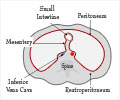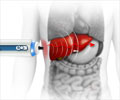New guidelines advocate for equitable newborn screening for cystic fibrosis through expanded genetic testing.

‘Did You Know?
Early and precise diagnosis of cystic fibrosis is now more attainable than ever, paving the way for enhanced patient care. #cysticfibrosis #childhealth #medindia’





Early and precise diagnosis of cystic fibrosis is now more attainable than ever, paving the way for enhanced patient care. #cysticfibrosis #childhealth #medindia’
Advancements in Cystic Fibrosis Diagnosis: New Consensus Guidelines
Key Components of the New Guidelines- Genetic Testing
According to the guidelines, the testing process must be extensive to discover mutations that exist in the Cystic Fibrosis Transmembrane Conductance Regulator(CFTR) gene that creates Cystic fibrosis(CF). The diagnostic method offers confirmation when older tests fail to determine a specific diagnosis. - Sweat Chloride Testing
Chloride level assessment through sweat tests serves as the primary method used for diagnosing CF. Rising chloride levels serve as markers for CF, so the guidelines include established procedures for both testing and assessing chloride's outcome. - Newborn Screening
The importance of early detection using newborn screening programs ensures immediate intervention and treatment actions. CF screening should be included in all standard newborn panels as per these guidelines (1✔ ✔Trusted Source
Diagnosis of Cystic Fibrosis: Consensus Guidelines from the Cystic Fibrosis Foundation
Go to source).
Shaping Tomorrow’s Care Today!
Following these recommendations can result in:- Earlier Diagnoses: Implementing necessary interventions at appropriate times to enhance life quality.
- Personalized Treatment Plans: Pharmacological interventions become more effective through specific genetic mutation identification obtained from extensive testing.
- Enhanced Patient Outcomes: CF patients benefit from reduced complications while achieving better long-term health conditions.
Reference:
- Diagnosis of Cystic Fibrosis: Consensus Guidelines from the Cystic Fibrosis Foundation - (https://pubmed.ncbi.nlm.nih.gov/28129811/)
Source-Ann & Robert H. Lurie Children's Hospital of Chicago













